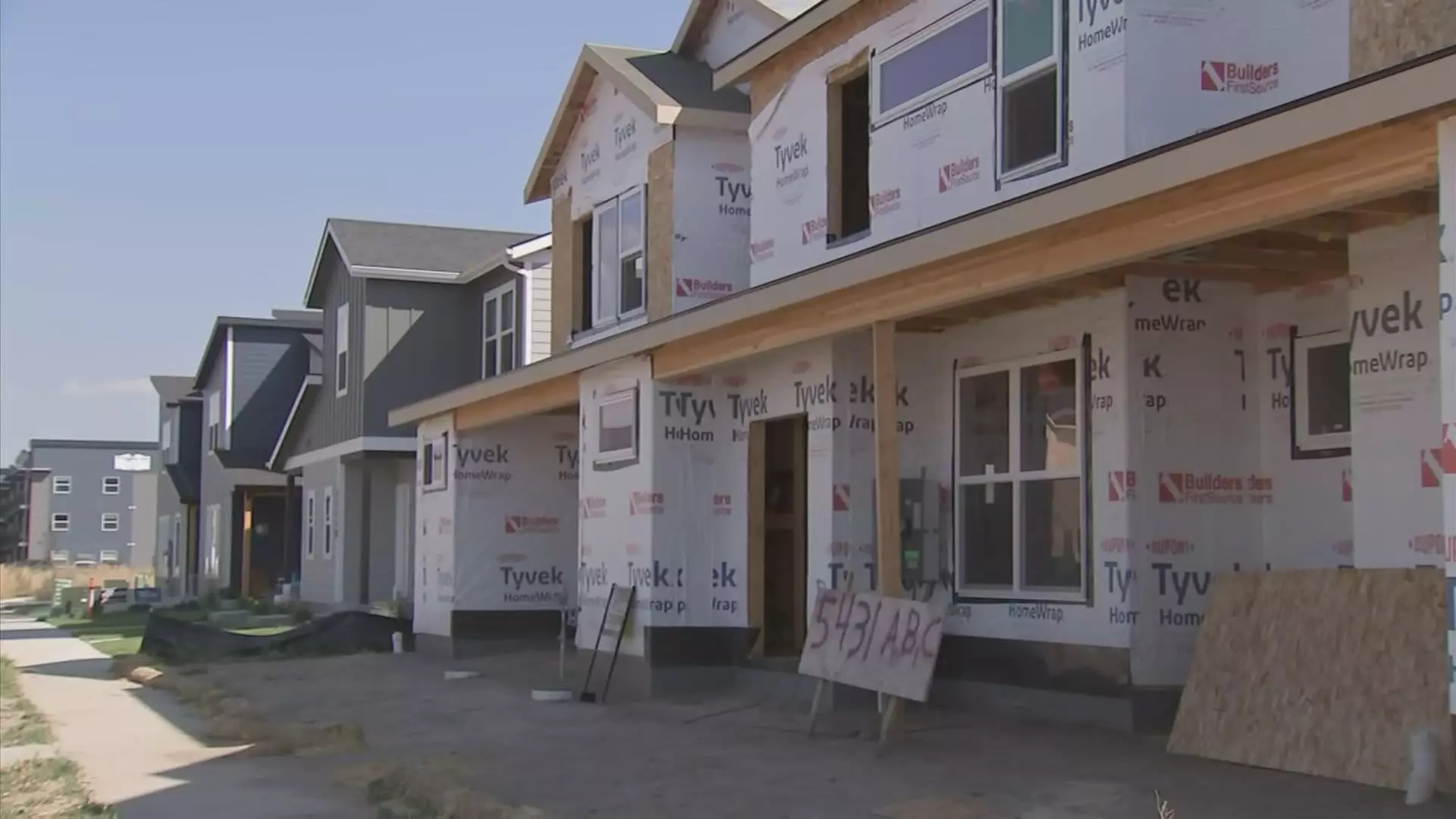In recent years, the charming city of Missoula, Montana, has witnessed a significant change in its residential landscape. With the emergence of new condos and duplexes, local officials are striving to confront the growing housing crisis that many residents are now facing. This surge in construction reflects the broader struggle for affordable housing throughout the state, exacerbated by a combination of burgeoning demand and limited supply. As DJ Smith, the president of the Montana Association of Realtors, notes, Montanans are finding it increasingly difficult to secure homes that meet their financial capabilities and personal needs amidst rising costs.
The catalyst for this crisis can be traced back to an influx of out-of-state individuals relocating to the picturesque Big Sky region. The appeal of Montana’s natural beauty and favorable lifestyle has attracted many, driving up demand for homes. However, Montana’s labor shortage presents a formidable hurdle, stifling the ability to create new housing units fast enough to accommodate this demand. The current state of affairs has transformed the housing market into a contentious issue, affecting not only residents but now playing a pivotal role in political campaigns, especially with the highly scrutinized Senate race on the horizon.
As the political climate intensifies, no candidate faces tougher scrutiny than Democratic incumbent Senator Jon Tester. His challenge comes as he seeks re-election in a state that overwhelmingly supported former President Trump in the 2020 election by a 16-point margin. Recent analyses from political forecasters indicate a shift in voter sentiment, with the race leaning in favor of his Republican challenger, Tim Sheehy. This shift highlights the mounting pressure on Tester to address pressing local issues—including housing affordability—to rally support among voters who feel neglected amidst escalating living expenses.
Housing has become a prominent focus of Tester’s campaign strategy. By articulating the struggles faced by Montanans who feel priced out by the growing influx of wealthier residents, Tester aims to resonate with a electorate concerned about the changing fabric of their communities. “We’re seeing a lot of folks come into the state, rich folks, who want to buy our state,” he expressed during a recent debate, underscoring his commitment to protect local interests.
Conversely, Sheehy, a former Navy SEAL and founder of an aerial firefighting company, attributes the rising housing costs primarily to inflation while targeting policies supported by President Biden and Tester. In a political climate fraught with competing narratives, he positions himself as a proponent of economic reform, insisting that the high cost of living is unsustainable for many businesses and residents in the state.
Amidst the political battles, many Montanans are grappling with the impact of skyrocketing housing prices. Recent statistics paint a sobering picture, revealing that housing prices in Montana have surged by 66% over the past four years, starkly outpacing the 50% increase observed nationally. Such figures lead to a distressing reality where longstanding residents feel they can no longer afford to live in the places they once called home. As Smith pointed out, wealthier newcomers—able to liquidate assets from high-cost areas—are paying cash for homes, thereby outbidding local buyers, further emphasizing the growing divide in accessible housing.
Building contractors like Andrew Weigand of Butler Creek Development highlight another layer of complexity: the labor market. A critical shortage of subcontractors, including electricians and plumbers, is partly due to an aging workforce. Weigand warned that without an influx of new talent to replace these aging professionals, construction efforts could stagnate, exacerbating the housing scarcity even further.
As the issue gains prominence in the political discourse, Tester has rolled out a series of proposals aimed at alleviating housing challenges, including grants for home repairs and programs to expand affordable housing options. Notably, he has suggested tax incentives intended to encourage the sale of mobile home parks to local communities rather than private developers, prioritizing resident ownership over luxury developments.
Meanwhile, Sheehy has emphasized the need to improve access to trade programs that can nurture a new generation of construction professionals. His focus on workforce development seeks to address the root issue of labor shortages, which, if tackled, could lead to more sustainable growth in the housing market.
As the election approaches, the housing crisis is more than a campaign talking point; it embodies the struggles of daily life for countless residents in Montana. Candidates will need to address the need for effective policies that promote affordability and availability in housing, thereby solidifying their positions in a transformed political landscape. Addressing this pressing issue holds the key not only to electoral success but also to the wellbeing of countless Montanans grappling with the realities of a changing economy. As both sides of the political aisle prepare for battle, the future of housing in Montana hangs in the balance.

